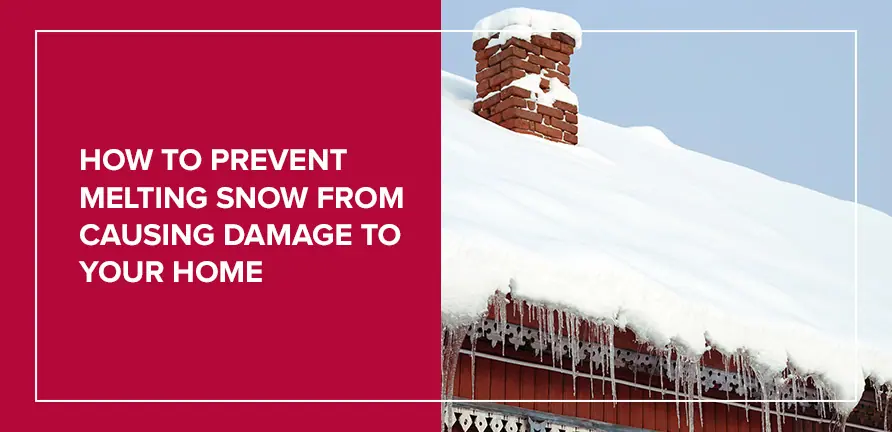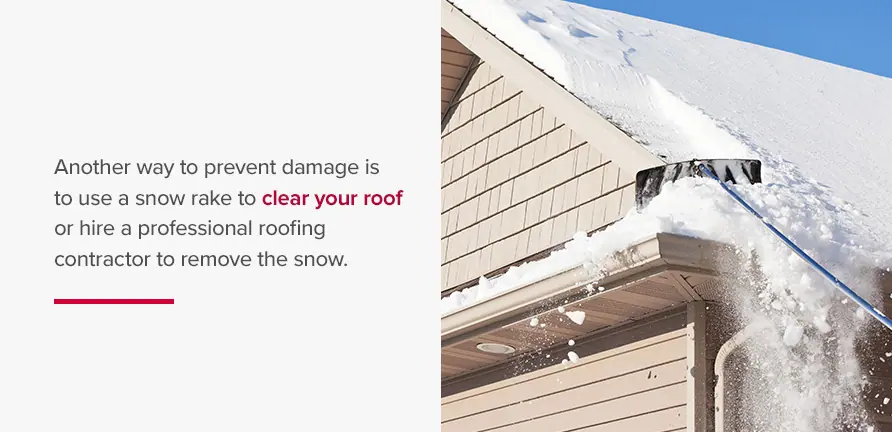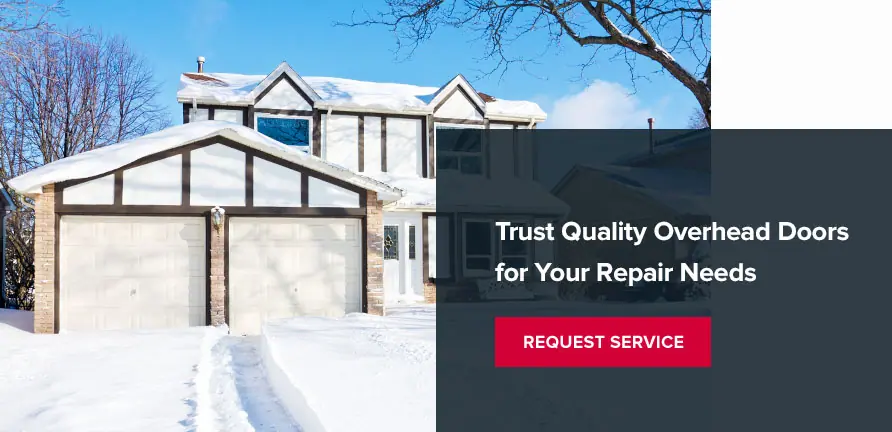As a homeowner, you have little control over nature and the elements’ impact on your home’s exterior. Snow and ice can be destructive, but what are the best ways to prevent this? Protecting your home from invasive snowfall is one precautionary step you can take.
Learn more about the potential damage melting snow causes, why you should implement preventive measures, ways to safeguard your home and other helpful information.
The Potential Damage Melting Snow Can Cause
Melting snow can pose several hazards and damage your home and property. Here are some concerns to be aware of.
- Snow can melt and refreeze — when this happens, the surface will be slippery. Anyone who walks across it can slip and fall, possibly injuring themselves.
- When the snow melts, the water can penetrate your home through the roof and walls and seep into cracks. These can enlarge as more water enters, causing leaks and gradually forming puddles inside your home.
- Your gutters can house ice dams that become heavy, which may break under the constant pressure. Shingles could also become loose as snow and ice gather on them. The roof risks caving in when it holds too much snow or ice for extended periods.
- Tracking in water, road salt and mud can ruin your home’s interior, specifically your hardwood floors. Consider placing a rack or basket near the door where everyone can put their shoes before entering.
The Importance of Implementing Preventive Measures
Preventive measures let you identify any issues before they happen or worsen. With preparation, you can take most of these steps before winter arrives. Having a proactive attitude will save you the time and money you would have spent fixing the damage.
Read on for ideas for how to prevent melting snow from damaging your home.
Tips to Protect Your Home From Melting Snow
It is possible to avoid damage from melting snow. Consider these preemptive tips.
Clear Wood Areas
Snow settles onto wood, including your front door threshold, garage door, wood decks and other surfaces. Waiting for snow to melt instead of proactively clearing it away can result in substantial damage. Remove snow and ice around your home and ensure your wooden surfaces remain damage-free through the year’s coldest months. Treat wood with a fresh coat of varnish or sealant before winter, allowing less chance of snow penetration.
Clear Gutters and Downspouts
Keep your gutters and downspouts clear of leaves and other debris in the fall. Melted snow can’t run through and down them if they are overflowing. Clogged gutters can allow water to spill over onto your property, possibly resulting in significant damage. Prioritize this task before winter’s first snowfall.
Clear roofs
Another way to prevent damage is to use a snow rake to clear your roof or hire a professional roofing contractor to remove the snow. The compounded snowfall weight on your roof can impact its structural integrity, leading to severe issues like the risk of it collapsing. Removing snow before it melts can help prevent costly roof repairs or replacement.
Fill Foundation Gaps and Cracks
When frozen precipitation finds its way into gaps and cracks in your foundation, it can expand and contract as it freezes and melts — which of course leads to foundation damage. Before the season of frozen precipitation, consider having a foundation company come and fill these gaps in order to prevent costlier damage down the line.
Promote Better Drainage
An effective drainage system is necessary because of water’s potential to cause damage. Efficient paths allow it to travel away from the home. The absence of gutters and other drainage systems will cost you in the long run. The initial installation may be expensive, but water damage repairs to your roof and other parts of your home outweigh this.
Proper drainage also helps prevent ice dams. They form when winter precipitation freezes at the roof’s edge, preventing upslope drainage. Ice dam removal improves drainage and avoids damage from melting snow.
Safety Considerations
Safety is imperative with every preventive measure you take. If you need to inspect your roof or remove snow and ice from it, enlist a professional roofing company’s help instead. They have the specialized training and equipment to walk on roofs and know the appropriate safety protocols to follow. Never try to do this yourself, as the risk of falling is too high. Wear protective clothing like durable boots, warm clothes and gloves while removing snow from your driveway and surroundings.
Winterizing Your Garage Door — How to Keep Your Garage Warm in Winter
Your garage sustains consistent impact from soft and hard snowfall. Ice also accumulates on the panels and around the edges, making it harder for the door to operate. If your door is uninsulated, install effective insulation to regulate the garage temperature and retain heat internally. Check the weatherstripping and replace it as needed.
Shine a flashlight around the door edges to check for holes and cracks, then seal any flaws you find to prevent cold air and snow from entering the garage. Inspect all the moving parts to ensure they’re working. Routine maintenance keeps your garage door in prime condition, especially in adverse weather.
Call a trustworthy garage door company for any visible damage that requires repairs. For peace of mind, replace your old, damaged garage door ahead of winter.
Trust Quality Overhead Door for Your Repair Needs
Winter brings inclement weather that might damage your Ohio home. The good news is that you can do something before it gets to that point. Following these tips will proactively safeguard against snow damage, but you might still need professional help inspecting and repairing your garage door.
At Quality Overhead Doors, our customers have trusted us for years to provide superior service using the best garage door materials. We will ensure your garage door is winter-ready.
Call us at 419-578-8700 or complete an online contact request form, and we’ll get in touch to discuss your requirements.
Updated 12/22/23



